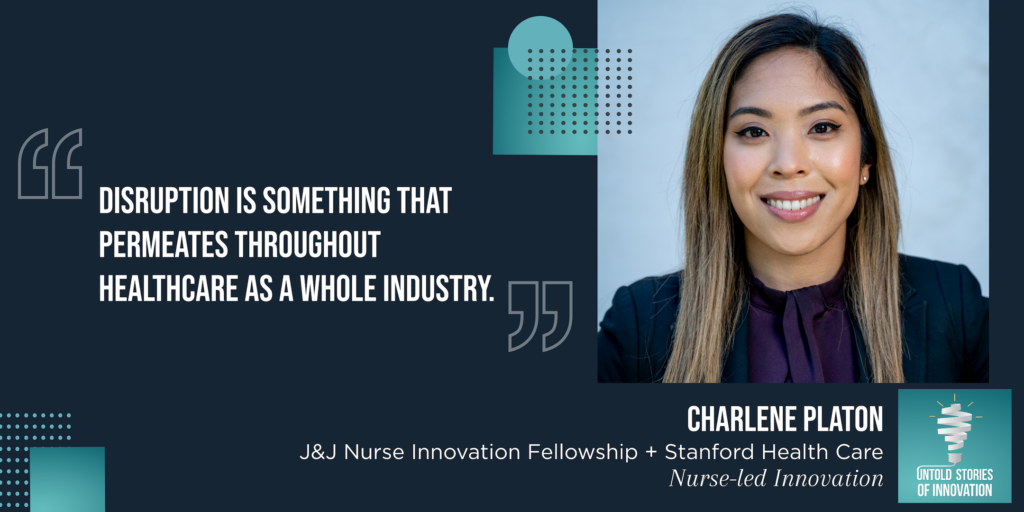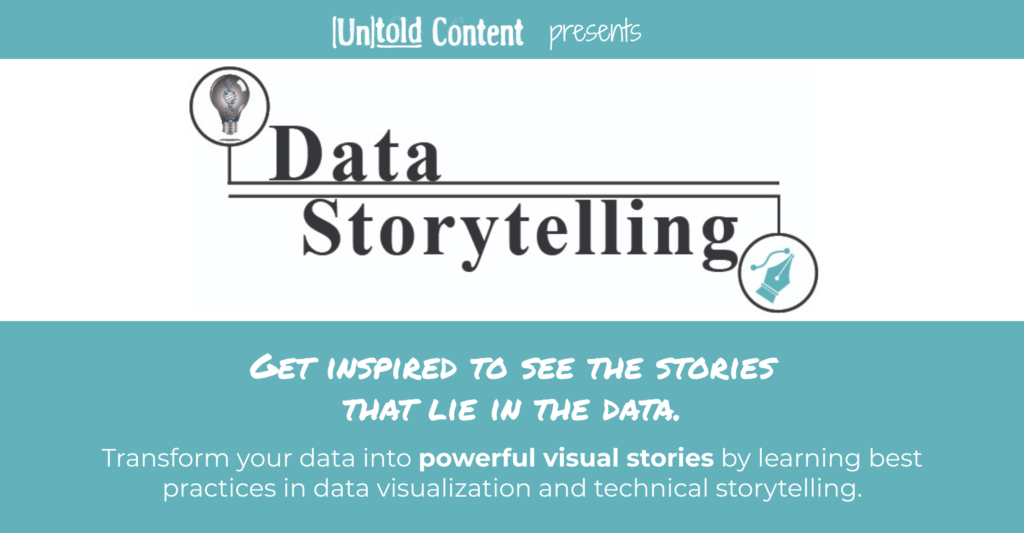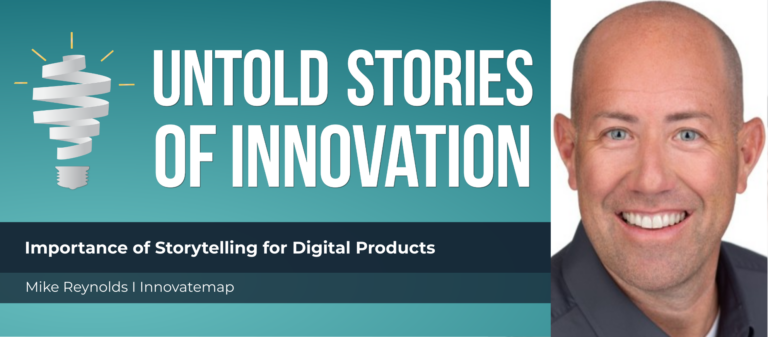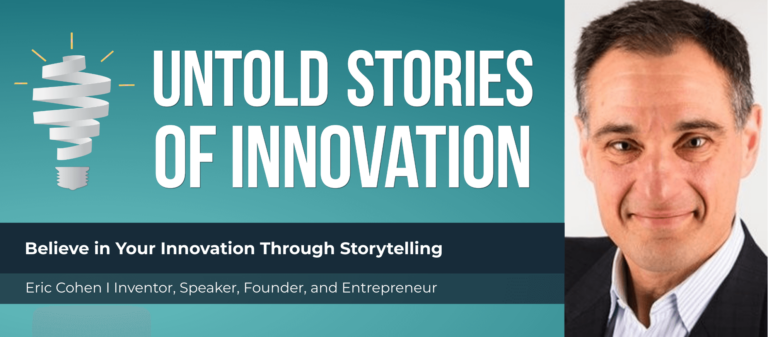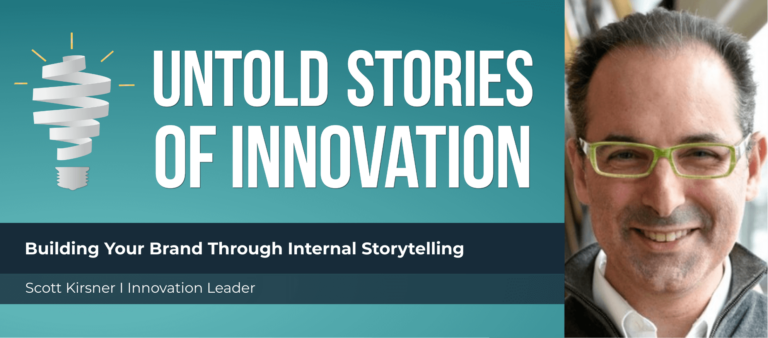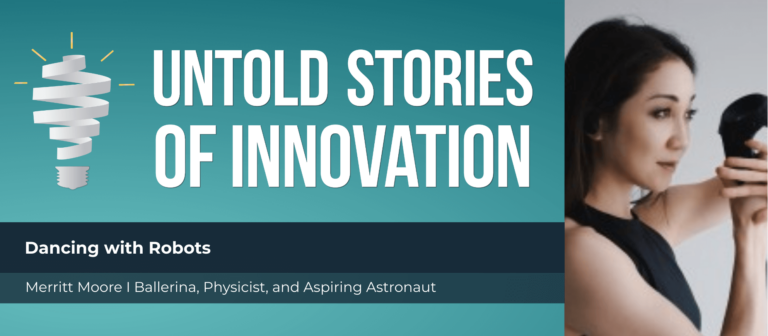Nurse-led Innovation with Charlene Platon
“Storytelling is so very important, especially when it comes to innovation and disruption.” —Charlene Platon, Johnson and Johnson nurse innovation fellow and director of ambulatory nursing at Stanford Health Care
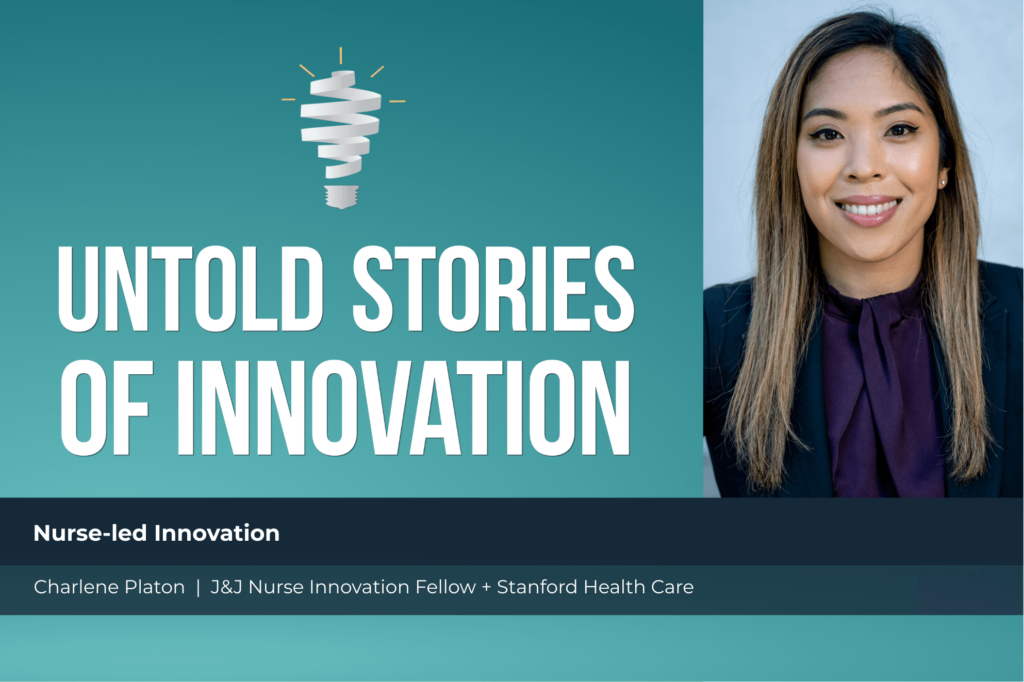
Nurse-led Innovation - Untold Stories of Innovation
“Storytelling is so very important, especially when it comes to innovation and disruption.” —Charlene Platon, Johnson and Johnson nurse innovation fellow and director of ambulatory nursing at Stanford Health Care
From today’s episode you’ll learn:
Why do stories matter to the innovation process? What values can be instilled in innovators who share stories? How do innovation leaders inspire creators to tell and share their success and failure stories?
Charlene Platon is a board-certified family nurse practitioner, a licensed registered nurse, the director of ambulatory nursing at Stanford Health Care, and a Johnson & Johnson Nurse Innovation Fellow. Charlene’s goal is to bring nurse-led innovation to the forefront of healthcare. In mid-May of 2020, she and Chris Caulfield of Forbes Tech Council were on one of the winning teams at SONSIEL, Microsoft, Johnson & Johnson, and DevUP’s international COVID-19 Virtual Hackathon. She reveals how critical storytelling was to get buy-in from the judges.
Healthcare #sheroes like Charlene highlight important stories of collaborative medical innovation. From process refinement to the new tech development that has led to improvements in medical equipment like ventilators and lyophilizers, nurses are in a unique position to see opportunities for healthcare improvement. Our key takeaway? All nurses are innovators, but not everyone is traditionally empowered to see it that way. We hope you take this nurse-led innovation story and apply it to your industry or to your community. Everyone could use a broader lens about who can be innovation leaders. Innovation isn’t reserved for Silicon Valley; it’s led by subject matter experts working together to improve their field. You can follow her on Twitter and LinkedIn.
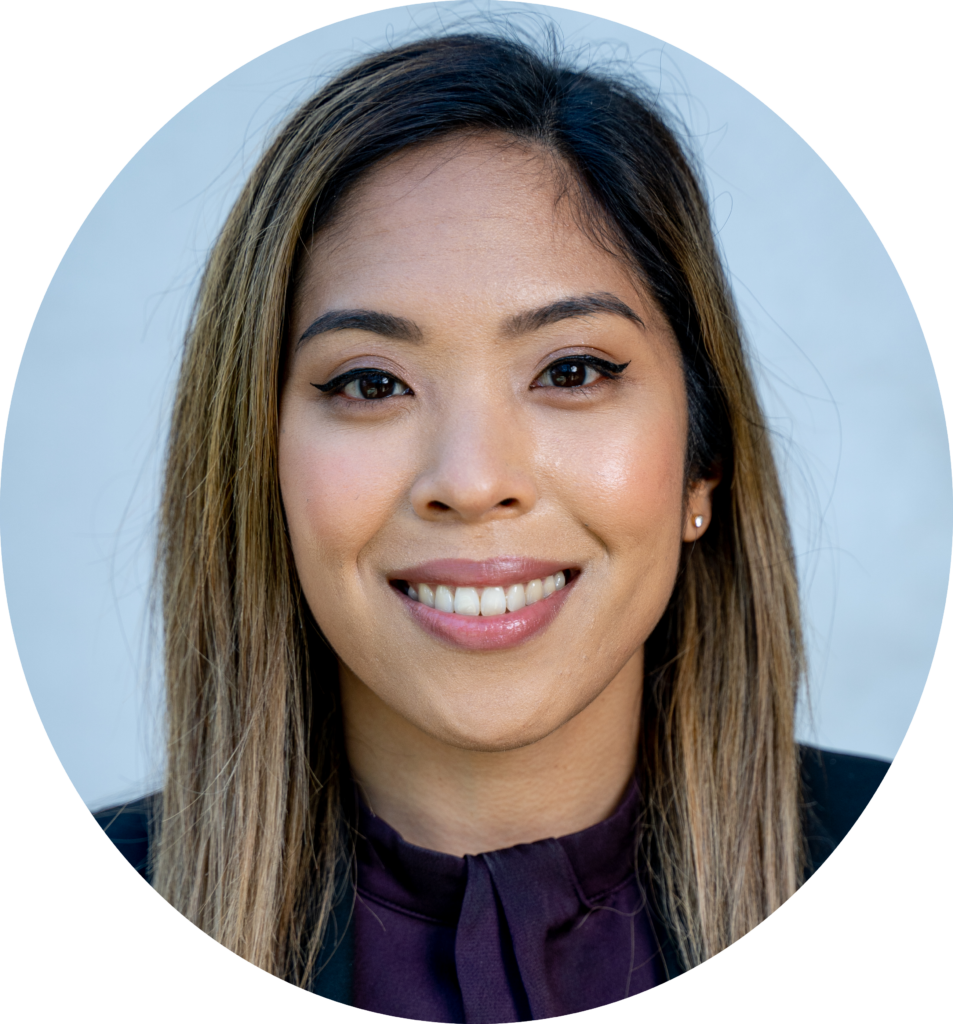
Charlene is a licensed registered nurse and board-certified family nurse practitioner. In 2016 she joined Stanford Health Care (SHC) as a Manager of Advanced Practice with a primary role of leading process and quality improvement initiatives to optimize practice for advanced practice providers. Currently, Charlene is a Director of Ambulatory Nursing at SHC. In this role, Charlene focuses on providing leadership for advancing, developing, refining, and innovating ambulatory nursing clinical delivery operations throughout the Stanford enterprise. In addition to her director position, Charlene is one of 12 inaugural Johnson & Johnson Nurse Innovation Fellows. In this Fellowship, Charlene plans to bring nurse-led innovation to the forefront of healthcare.
This episode, Nurse-led Innovation is powered by data storytelling training from Untold Content and Data+Science. Transform your data into powerful visual stories by learning best practices in data visualization and technical storytelling. Whether you’re a PowerBI or a Tableau person—or just want to better communicate your data—this workshop will inspire you to see the stories that lie in the data. Learn more at untoldcontent.com/data-storytelling-training.
Katie [00:00:04] Welcome to Untold Stories of Innovation, where we amplify untold stories of insight, impact, and innovation. Powered by untold content, I’m your host, Katie Trauth Taylor. Our guest today is Charlene Platon. She is director of ambulatory nursing at Stanford Health Care. She’s one of 12 inaugural Johnson and Johnson Nurse Innovation Fellows. She’s a board-certified family nurse practitioner, a licensed registered nurse, and a member of the winning team for the nurse Hack for Health COVID-19 Virtual Hackathon held in May 2020. Winner of the Resiliency and Self-care Division. We are so grateful to have you on the podcast, Charlene. Thank you for being here.
Charlene [00:00:49] Thank you so much for having me, Katie. I’m glad to be here.
Katie [00:00:51] We noticed as we were interviewing women like yourself that we were starting to recognize sort of healthcare #sheros, if you will. And we got inspired by this sort of subcategory of the podcast and started reaching out to women who were just outstanding in their fields. And I’m so grateful to hear more of your thoughts today about why innovation matters to the field of nursing. And to hear your journey as well.
Charlene [00:01:18] Thank you so much, Katie. And I’m glad that you mentioned sheros. I love that. And I think that’s an important call-to-action, to really focus on the innovations from women in healthcare and women in nursing. But just in general, a call-to-action to bring attention to nurse-led innovation. And the idea of nurse-led innovation is so important. Just because, you know, nurses have always been innovating at the bedside, and something that I’ve noticed in my entire healthcare career as a nurse is that nurses have never called their innovations as actually innovation. We were never informed to call it innovation in the past. And I think that now with so much momentum happening with nurse-led innovation, with 20/20 being the year of the nurse and midwife, and also with the work of nurses on the frontlines in this global pandemic, that now is really the most important time to put that nurse led-innovation into the forefront. And I’m so excited to be part of that mission and part of that advocacy.
Katie [00:02:20] Yes. So thank you so much for that introduction to nurse-led innovation and some of the context behind why it matters. Can you share a little bit more? You know, as a nurse, when was the first time that you heard the phrase nurse-led innovation? And when did it sort of come about in your field?
Charlene [00:02:37] That’s a great question, Katie. And to be honest, the first time I heard the term nurse-led innovation was just last year.
Katie [00:02:46] Sure.
Charlene [00:02:46] Yeah, and it’s amazing because looking back, I know so many nurses who are innovators. I would say all nurses are innovators and in different ways, really. But with that term, the first time I heard it was actually watching Rebecca Love talk about nurse-led innovation during her TED talk. And she was really the first nurse that stood on the TED stage. And I’m so glad that the topic was about nurse-led innovation because it’s something that people have never heard before, especially nurses. If I have not heard of that term before, I don’t think that other members of the healthcare community or the public in general have heard that type of a term. And so hearing that for the first time last year was really important for me because I immediately connected with Rebecca on Linked-In. I immediately shared her post and had other people listen to her talk, because for the first time I realized that everything that I’ve done before in the field of healthcare has been not only improvement, but innovation. And I think that’s a very important term. Another way that I’ve heard of it was really through my Johnson and Johnson nurse innovation fellowship. And that was another program that I actually found out about because of Rebecca Love. And she is one of the facilitators of that program. And so highlighting Johnson and Johnson with this nurse innovation fellowship was huge. And it really brought forward that nurses are big innovators as well.
Katie [00:04:18] You know, the idea of innovation inside of the healthcare industry is very multi-faceted. You sort of have—internally inside of health systems—historically a lot of emphasis, like you said, on improvement, process improvement, lean innovation, lean management systems, so many different methodologies for trying to make health systems better. And you also then have the sort of health tech, digital health community, which can be, in some ways and I’m probably extrapolating a little bit, but seen as disruptors. Right. People from outside of healthcare are trying to make changes against it. Where would you say nurse-led innovation sort of falls within that spectrum?
Charlene [00:05:02] Yeah, that’s a great question, Katie. And you’re definitely correct in that health care innovation is absolutely multifaceted. There’s so many different ways that you could improve and innovate in healthcare. There is definitely the quality improvement lean Six Sigma methodology aspect, but there’s definitely the healthcare technology aspect, biomedical devices, clinical innovations in that arena. And to be honest, nurses spend all those different types of innovation. And with my experience as a bedside nurse, my first experience with innovation was really in the improvement side and it was improving processes, improving areas of the healthcare workflow that were not as efficient as they could be. So it was more in line with Lean Six Sigma removing waste from processes, making things more efficient. But then in my Nurse Innovation Fellowship, I have such a diverse group of members in the cohort with me and they range anywhere from frontline innovators at the bedside to business owners, entrepreneurs and also medical device creators. And so I really, truly think nurse-led innovation spans the whole spectrum. And, you know, I really think that’s not something a lot of people know about, because we don’t often hear that nurses are entrepreneurs as well or inventors as well. And that was something that I was so happy and excited to hear about with more and more of my involvement in this space and with more and more of the momentum of nurse led innovation being brought forward. So it’s been great to see.
Katie [00:06:42] I completely agree. Something that I love following, and I think a lot of the listeners to this podcast enjoy following, the ways in which the art of innovation gets disrupted, whether that’s an actual innovation or the people doing the innovating. And so, you know, for instance, changing the script on only certain types of people, whether that’s a racial identity or a gender identity or a geographic identity—you know—the idea that innovators only come from the valley. So there’s so much to disrupt in terms of product and market and industry and methodology and process. But there’s also a lot to disrupt and innovation when it comes to who is doing the innovating and the ways that that just explodes everyone into white space areas that maybe no one even had on the radar before.
Charlene [00:07:38] Absolutely. And you’re right. A lot of people have the idea that innovation only comes from one place, that all great businesses and inventions come from Silicon Valley, which is where I’m actually located right now. So it’s just funny how that happens, but I absolutely see that. And people don’t realize that inventions come from all over. And really, innovation happens everywhere. I could name innovations happening from every single health care organization that I’ve been a part of. And really, that idea of disruption is something that permeates throughout healthcare as a whole industry. And really not just with technology or just that idea of, you know, someone in Silicon Valley creating a mobile application or something like that. But the disruption really comes in all different shapes and sizes and a lot of it is behind the scenes, too. So it may not be as flashy as an invention or something that’s a product. But it could also be a program. It could be a process improvement. So I do think that it’s an important distinction to make.
Katie [00:08:48] Yes. Well, without further ado, I really want to talk about this hackathon. I am so excited for you and your team. Tell us all about it. I mean, this is the topic of the hour—is how are we going to innovate together against this pandemic? And it’s on everyone’s hearts and minds. We all are so deeply concerned and we’re so hungry for breakthrough. Could you share with us what the hackathon was like? It was just this weekend, right?
Charlene [00:09:18] Yeah, it was just this past weekend, May 15 to May 17. And it was a really fast pace, pretty intense environment, even though it was all virtual. And so I was really impressed because it was a partnership between Johnson and Johnson, Microsoft, Sonsiel, which is a nurse innovation society. And also, Dev Up Conference. So four huge, different groups all came together online to really bring hundreds of people into one innovation space over this past weekend. And so I believe that actually more than nine hundred people signed up to participate in some way. Whether that was—yeah, it was pretty crazy. I was so amazed. And I believe that the nine hundred people were all composed of either participants, facilitators, organizers, mentors, judges and other people who are collaborating and supporting, you know, the event. And in the end, I think—I’m not exactly sure how many people were in the teams. I think it was at least a couple hundred still. And so it was a huge, huge event. And to have it all take place online with Microsoft’s help, it was really, really impressive.
Katie [00:10:35] Could you paint the picture of what it looked like? What was the—did you actually sort of—was it virtual reality? Was it a zoom call? Like how did they organize it?
Charlene [00:10:45] Yeah. So primarily the whole interaction and the whole organization of the event was done on Microsoft teams. And I actually have never used Microsoft teams before. And it’s actually a great way to organize events because it brings all the collaboration into one space. So it does integrate video conferencing, phone conferencing, and it also integrates different chat channels and teams to organize the different work that people are doing. So each team had a channel and there were about 30 teams total that participated. And each team had about, you know, anywhere from two people to ten people plus. And so each team had their own channel on Microsoft teams. And that was the primary method for the team members within that group to communicate. And so it was all done through this program. And I’m not sure if you’re familiar with Microsoft teams?
Katie [00:11:43] A little bit. Yes.
Charlene [00:11:44] Yeah. It was definitely new, but it was easy to use. And so in that program, too, they have a place where you could organize your to do list your tasks and, you know, assign different tasks to different people. And it’s kind of just like message boards. And, you know, you could talk back and forth to your teammates, but you also have a chat feature if you just want to message specific people or directly message other people. So it kind of meshed together all the different things that we know about virtual conferencing into one place. So it was really nice.
Katie [00:12:17] So tell us about, you know, choosing your team and taking on a particular category area.
Charlene [00:12:24] Yeah. So I first knew about the hackathon because of my involvement in the Johnson and Johnson Nurse Innovation Fellowship and actually with the different tracks that they had. I was immediately drawn to the resiliency and self-care track, because of my experience as a nurse on the front lines in the past and also because of my involvement now in nursing leadership, I do know how much resiliency and self-care is needed and has always been needed for those professionals on the frontline. And so that track was really near and dear to my heart because I know how difficult it is. There are so many challenges right now that are happening for nurses on the frontline and there is such a big need. You know, we’ve all heard about physician and nurse burnout, we’ve all heard about healthcare professional burnout. And with this global pandemic happening, it really just goes above and beyond the needs that I’ve seen before. And so I really wanted to dedicate something to the pandemic that other other professionals could hopefully use to help support them through these really challenging times. And I found out about the team that I wanted to join, because I’m connected with a lot of different nurse innovators on LinkedIn. And LinkedIn is an amazing resource. And that’s really how I found out about so many different nurses and their different ways that they innovate. And one of those nurse innovators is Chris Caulfield. He’s the co-founder and chief nursing officer of Intellicare, which is a software that’s used to help support staffing for nurses and post-acute care facilities. And so I found out that Chris was participating in the hackathon. And I immediately connected with him and asked if I could participate with him and join his team because I knew he wanted to be part of the resiliency and self-care track. And so fortunately, I was able to join him. And so that’s how we got our team started. And then, as we posted on Microsoft teams that we needed some members, it was very organic. And we had a lot of nurses who were really just naturally drawn to that track to join us. And they were all so passionate. And a lot of—we had about, including me and Chris, there were eight nurses total who joined our team and then two technical experts who helped with UX design, with digital marketing. So it was a great mix of different types of expertise. And so having all of these nurses who are also experts in mental health, who are also experts in compassion fatigue and all of these different types of mental health aspects of care. It was a great collaboration.
Katie [00:15:03] That’s absolutely incredible. You know, taking a pause for a second to really think about, you know, that the problems around coping interventions for nurses and how important resiliency is in this profession. Can you share a little bit about how the pandemic in particular is making all of those things even more challenging? And how are you doing? How is your community? What are your perspectives on that now?
Charlene [00:15:33] Yeah, the global pandemic has really been an unprecedented challenge. I mean, we all know that the American healthcare system has a lot of challenges in the infrastructure and in the way that we deliver care and reach vulnerable populations. But with the pandemic, it really highlighted just how our healthcare system needs support and how much more the infrastructure needs to be developed and further able to support the people who need healthcare the most. And so with the pandemic, it was just a huge range of different issues that came up. It was a lot of people who weren’t able to access the care that they needed. It was just so many different challenges of knowing how to navigate because we didn’t know a lot of information about the virus when it first came about. We weren’t sure about the way that it was transmitted or the appropriate precautions to take. So very challenging to navigate in the healthcare setting. And when the pandemic first hit and was first starting to become more of a known issue in the United States, I was in a different position in Stanford health care. I was working as the manager of advanced practice. And in that role, I was directly overseeing nurse practitioners and physician assistants who were working on the frontline, working with patients who were potentially, you know, under investigation for Covid. And so it was really challenging to be able to appropriately inform the staff and help them with what they needed, the resources they needed, even making sure that they have all of the personal protective equipment that they needed. You know, just so many different types of challenges all into one.
Katie [00:17:20] Yes, absolutely. And so it seems like you had a wonderful pull strategy for this particular category. And so how did story play a role in the way that the team started functioning around the problem of resiliency and self-care and the solution that you came up with?
Charlene [00:17:38] Absolutely. Each of our team members had a different story. Even the non nurses in the team, everyone had a different story when it came to the challenges of COVID-19. And it was something that all of us could connect to. And I think that’s why storytelling is so very important, especially when it comes to innovation and disruption. And one particular experience that stuck with me was that one of our team members was particularly passionate about joining this hackathon, because shortly before the hackathon took place, one of her dear colleagues had passed away by suicide, unfortunately. And that’s something that’s been happening. You’ll see, you know, more and more. And it’s something that I’ve been reading about and hearing about more and more just through all different types of healthcare professionals. And when she was informing our team about this and what happened, we all immediately felt that and we all immediately could connect with her and feel this empathy. And really, we wanted to help and support nurses like her and also other health care professionals who are facing that challenge, because it’s not just a singular event. And so if we didn’t have that context or if we didn’t have the context of the experiences that everyone is facing, it would truly be a different story. It would be, you know, it would be a different solution that we would come up with. It would be a different problem that we are trying to solve. But it’s very different when you hear a nurse say, I’m stressed or I’m burnt out versus I’m stressed and burnt out because one of my good friends passed away yesterday. So.
Katie [00:19:15] Right.
Charlene [00:19:15] Yeah. So it was very compelling. And we all just felt like this was a huge problem that we wanted to fix. And so we worked together very well despite not knowing each other and, you know, meeting each other for the first time, all online and all through virtual means.
Katie [00:19:31] And let me add to this, too, that all of you, I’m sure, are are working incredibly hard. Some of you on the frontlines during a pandemic, and you’re spending your weekend in an innovation hackathon because you feel that passionately about the problem. I think there’s so much to be said in the innovation community around open innovation in particular, or inspiring people to follow their passions and to connect on an empathetic level to a particular problem, because the solution will come so much more rapidly when you have that level of connection and empathy with the problem.
Charlene [00:20:10] Exactly. And it really speaks volumes that hundreds and hundreds of people throughout the country and actually throughout the world. We had other people internationally join in and participate in the hackathon, which just speaks volumes about how much this problem matters to so many people and how much people who are healthcare professionals or non-health care professionals really want to contribute and help. And for me personally, since I’m currently not working as a nurse on the front lines and I haven’t directly interacted with patients who have COVID-19 or have directly cared for those types of patients, I really wanted to do something or anything really that I know could help nurses or professionals or anyone who’s really facing stresses and mental health challenges because of the pandemic.
Katie [00:21:00] Yes, absolutely. So, you know, you shared where story emerged in the formation—sort of the formation of your team—and how that aligned everyone together around the problem and its deaths. Could you share now kind of zoom forward to creation. You’ve now created a prototype. What was the pitching process like? What story did you—did you end up sharing that same story when you presented your concept to the larger teams again?
Charlene [00:21:28] Yes. So it was interesting because in the event you have two opportunities to pitch. And so on Saturday, which was day two of the hackathon, we had three minutes to do a practice pitch with the judges. And then they gave us about seven minutes to give us feedback. And actually, we didn’t. We originally didn’t include that story in our pitch because we had so much information we wanted to include in the three minutes. And it’s a very quick time. So first, you know, we’re just focused on getting all of the information in. But then after that pre pitch, one of the pieces of feedback that we received from the judges was, you know, we didn’t hear the story. We want to really hear the story that has to connect with the solution. And we want to know who is this affecting? Which nurses are you trying to reach with this solution? And so, you know, immediately the light bulbs went on. And then just going back to that story that one of our members shared with us before, we did include that in the final pitch. And that took place yesterday on Sunday. And so we definitely did include that. We originally wanted to include a video of the nurse speaking about her experience. But then unfortunately, in the final pitch, we weren’t able to add the actual video. It was very compelling, but we were able to mention it in our pitch deck. And I do think it connected with people.
Charlene [00:22:58] Wow. Yes, absolutely. So that’s wild. What was your first version of the pitch very data-centric or very explanatory about the features of the app?
Charlene [00:23:08] Yes. And I know that’s an easy trap to fall into when you’re someone who is building a pitch deck or someone who wants to highlight different things about your idea. It’s very easy to talk about the features and the data and the business model. And then sometimes you don’t realize that the story’s missing.
Katie [00:23:31] I love this lesson. It’s such an important takeaway because I think that, especially as scientifically-minded people, we tend to fall into this trap so quickly. And especially when you’re really thinking through something and you’ve thought through the features that are correct and the usability of something and its purpose. It’s easy to kind of scratch story off the list and focus on those quantitative things. But yeah, it’s interesting how actually the momentum still needs to come from story somewhere in that pitch.
Charlene [00:24:04] Right. And you’re absolutely right with the insight you brought in, because as healthcare professionals who are really focused on evidence-based research, on data and numbers and science, it is really hard sometimes to incorporate the qualitative data and that isn’t something that’s often—you don’t really see that prioritized a lot sometimes when it comes to different ideas. And I mean, that’s probably there, but it’s not highlighted as much. And so it was a really great takeaway from the hackathon and just a way to bring us all back down and ground ourselves into thinking, you know, the real problem is really that a lot of these healthcare professionals are facing these very tough situations and they’re suffering a lot of different losses, whether it’s a friend, a colleague, a loved one, and even a lot of moral distress with making really difficult decisions on how to provide care for the patients. So absolutely, it was a great lesson learned.
Katie [00:25:06] With that in mind, Charlene, I would love your perspective on why nurses are so primed to innovate.
Charlene [00:25:14] Yeah. And it’s a great question. And and, you know, in our training in nursing school, we are taught to question the status quo. We are taught to question health care delivery. And I do think that as a nurse, since you’re with the patient for, you know, 24/7 at the bedside in the hospital or since you interact with patients so much and you’re the consistent person that’s really available for the patient, at least in the acute care setting. You’re able to see a lot of different things that others can’t. And I do think that’s a really special component of nursing that a lot of different other healthcare professionals may not have. They don’t always have that insight because they can’t see all the workflows not working in an optimized way. But nurses can see that. [38.7s] And I think these different experiences and also just the genuine, authentic personality of nurses. We really want to provide the best care for people. And so I don’t think you can really stay in nursing or really become a nurse without that need or desire to want to help people. And I think because of that and because of the training we receive and because of the problems that we see consistently around us as we’re navigating the health system, we want the best in others and we want the best experience for others. And so we naturally will look for those solutions and naturally find ways to do things better. So that’s what I see in nursing.
Katie [00:26:48] Absolutely. I couldn’t agree more. Could you take us back as well to the Johnson and Johnson Nurse Innovation Fellows program that you were part of and share a little bit about how that changed your perspective on innovation and your role within it?
Charlene [00:27:04] Yeah. And the Johnson and Johnson Nurse Innovation Fellowship has been such an amazing experience. And it’s really changed my life. I would say and really changed my perspective on nursing in a way that has made me so much more excited and so much more passionate about continuing to contribute to the field of healthcare and the field of nursing. And one of the things that really struck me about the program is the sense of community that I have with the people, my cohort, and also just knowing that the innovation world is actually much, much bigger than I thought, because, you know, when you’re working in the healthcare system, you don’t exactly know who is innovating because the nurses that you’re with, they may be working on, you know, working with patients independently. And you may not know exactly what they have done during their shift that had helped the patient have a better experience because you have your own patient load that you’re focusing on. And so it was tough when I was at the bedside as a registered nurse in the hospital, because I had no idea who was interested in that—the idea of innovation—even though I knew that a lot of my colleagues were innovating. But with the fellowship we immediately have that community of nurses who are very passionate have already done a lot of different things towards innovation. And it’s such a diverse group of people. And I really think that we’re all so passionate about this idea that we all really clicked. And, you know, I really feel like I found my tribe in those different nurses that I’m with. There’s twelve of us total and we’re all so close, despite only really seeing each other in person maybe two times. And the rest of the times we’ve been having virtual meetings. But our program is two years in total and it just feels so great to know that you’re not the only one who wants to make a difference. I mean, absolutely not. There’s so many people who want to. But to have that sense of community and to have that shared vision and mission really makes a difference.
Katie [00:29:10] Absolutely. So it’s really this wonderful cohort model. And then you were part of the first one. So will there be more, I assume? Has a new cohort started yet?
Charlene [00:29:20] Yes, there will definitely be other cohorts that join in after us. And actually with the next cohort that comes in, the first cohort will serve as mentors for the next cohort that comes in.
Katie [00:29:32] Great.
Charlene [00:29:33] And so no word yet on when the next cohort is going to start. And given the challenges right now with the pandemic, there has been some changes to the program. So more on that to come, but I really look forward to the other cohorts that join in after us. And I already know that so many people are interested because after all this news and information spreading about this program, so many nurses have messaged me or talked to me about wanting to join the program or wanting to apply. And it’s been really inspiring because. It really reinvigorates your passion for nursing and for healthcare and how we can really directly make it better.
Katie [00:30:15] Yes, absolutely. Charlene, I’m so grateful for this conversation, for hearing about the ways that you look at the world through an innovation lens, to learn about nurse-led innovation, see why it matters. And to hear your experience, especially with story inside of the hackathon. I’m again just incredibly grateful for the lessons learned in our conversation. And I’m hopeful that one you feel celebrated as a healthcare #shero, and two that other people listening, see and really start to think with broader lenses about who should be in charge of innovation and who should be viewed as innovators, because I believe that any person can view themselves that way and impact the world, as you said.
Charlene [00:31:02] Absolutely. And I really like how you phrased those different types of ways that we could, you know, further think about nurse-led innovation. It is really important for nurses to view themselves in that way because it really empowers you, and it really makes you know, that you can make a difference in the lives of your patients, even though it’s something that nurses have been doing for so many, so many years. And so just being able to highlight, you know, that nurses are innovators and that they have great ideas and being able to include nurses in key healthcare decisions, I think is very important moving forward. And, you know, now with the pandemic and after everything is settled down, one of my missions, as a director of ambulatory nursing and as a Johnson and Johnson nurse innovation fellow, is to continue to bring nurse ideas and nursing innovation to the forefront and try to see how we can leverage that. And I hope that after, you know, even after 2020, even after the pandemic settles, that we still highly regard nurses and their ideas. And that’s really my hope for the future.
Katie [00:32:08] Do you think that you’ll scale up the prototype? Do you think you’ll do anything more with it?
Charlene [00:32:13] Oh, yes. Our team—our app is called Wellnurse, which is a play on wellness. And since we were one of the winning teams, we do have a chance to collaborate with Microsoft and Johnson and Johnson and Dev up conference in Sonsiel, and we will be receiving mentorship from them in the next few months and I think even up to a year. And so we’ll have access to Microsoft engineers. And I really want to see the app come into the market and hopefully get into the hands of nurses as quickly as possible. But I’ll keep you posted on that, because I’m so excited about it and I just can’t wait to start.
Katie [00:32:53] Yes, absolutely. And it’s a profession that is so critical, especially in these times. I hope that the nurse community sees the amount of support that everyone is outpouring. And I hope that they feel celebrated at this time. And I hope that others to really take this lesson of nurse-led innovation and apply it to your industry or to your community. And think about pilot-led innovation and teacher-led innovation and grandparent-led innovation. There are so many different ways that we can think about identity and the way that we name ourselves as innovators or not and what that can do. So again, Charlene, thank you so much. Where can people find you on social media?
Charlene [00:33:38] Yeah, I’m all over social media. I have a Twitter @charleneplaton. I have a LinkedIn, also Charlene Platon. And those are the main ways that I communicate with people and especially LinkedIn. And it’s been such a great resource and community. So, if anyone would like to connect and talk about innovation or ways to continue to promote these different identities of innovation, please reach out to me. I’m more than happy to connect.
Katie [00:34:04] Thank you so much, Charlene, and stay safe and keep innovating.
Charlene [00:34:07] Thank you so much for having me. Katie, I really appreciate it.
Katie [00:34:12] Thanks for listening to this week’s episode. Be sure to follow us on social media and add your voice to the conversation. You can find us @Untold Content.
You can listen to more episodes of Untold Stories of Innovation Podcast.
*Interviews are not endorsements of individuals or businesses.
